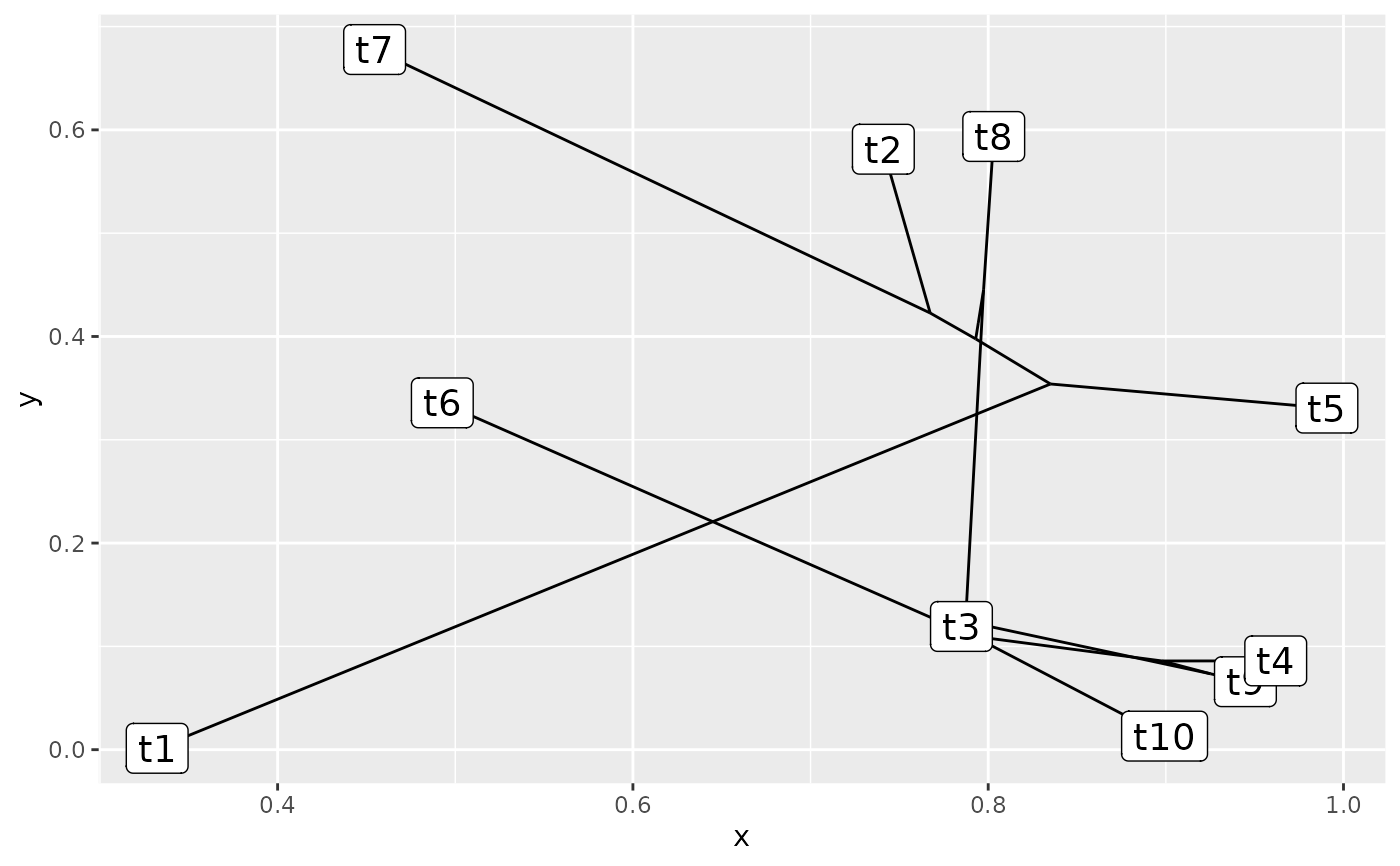This behaves similar to phytools::phylomorphospace(), but is for plotting a
2-D phylomorphospace with ggplot2::ggplot(). This function works like any
other ggplot2 geom; it can be combined with other geoms (see the example
below), and the output can be modified using scales, themes, etc.
Arguments
- tree
An object of class "phylo".
- mapping
Set of aesthetic mappings created by
aes(). If specified andinherit.aes = TRUE(the default), it is combined with the default mapping at the top level of the plot. You must supplymappingif there is no plot mapping.- data
The data to be displayed in this layer. There are three options:
If
NULL, the default, the data is inherited from the plot data as specified in the call toggplot().A
data.frame, or other object, will override the plot data. All objects will be fortified to produce a data frame. Seefortify()for which variables will be created.A
functionwill be called with a single argument, the plot data. The return value must be adata.frame, and will be used as the layer data. Afunctioncan be created from aformula(e.g.~ head(.x, 10)).- position
A position adjustment to use on the data for this layer. This can be used in various ways, including to prevent overplotting and improving the display. The
positionargument accepts the following:The result of calling a position function, such as
position_jitter(). This method allows for passing extra arguments to the position.A string naming the position adjustment. To give the position as a string, strip the function name of the
position_prefix. For example, to useposition_jitter(), give the position as"jitter".
- ...
Other arguments passed on to both
ggplot2::geom_segment()andggplot2::geom_point().- seg_args
A list of arguments passed only to
ggplot2::geom_segment().- point_args
A list of arguments passed only to
ggplot2::geom_point().- arrow
specification for arrow heads, as created by
grid::arrow().- arrow.fill
fill colour to use for the arrow head (if closed).
NULLmeans usecolouraesthetic.- lineend
Line end style (round, butt, square).
- linejoin
Line join style (round, mitre, bevel).
- na.rm
If
FALSE, the default, missing values are removed with a warning. IfTRUE, missing values are silently removed.- show.legend
logical. Should this layer be included in the legends?
NA, the default, includes if any aesthetics are mapped.FALSEnever includes, andTRUEalways includes. It can also be a named logical vector to finely select the aesthetics to display. To include legend keys for all levels, even when no data exists, useTRUE. IfNA, all levels are shown in legend, but unobserved levels are omitted.- inherit.aes
If
FALSE, overrides the default aesthetics, rather than combining with them. This is most useful for helper functions that define both data and aesthetics and shouldn't inherit behaviour from the default plot specification, e.g.annotation_borders().
Details
The ancestral states are estimated using phytools::fastAnc(). Note that
phytools is not necessarily installed with deeptime, but it is required
to use this function. Following the estimation of the ancestral states, the
nodes are connected using ggplot2::geom_segment(), while the tips are
indicated using ggplot2::geom_point().
The default expectation is that the order of the data is the same order as
the tip labels of the tree (tree$tip.label). However, if this is not the
case, you can map the optional label aesthetic to a column in the data that
contains the tip names (see example below).

